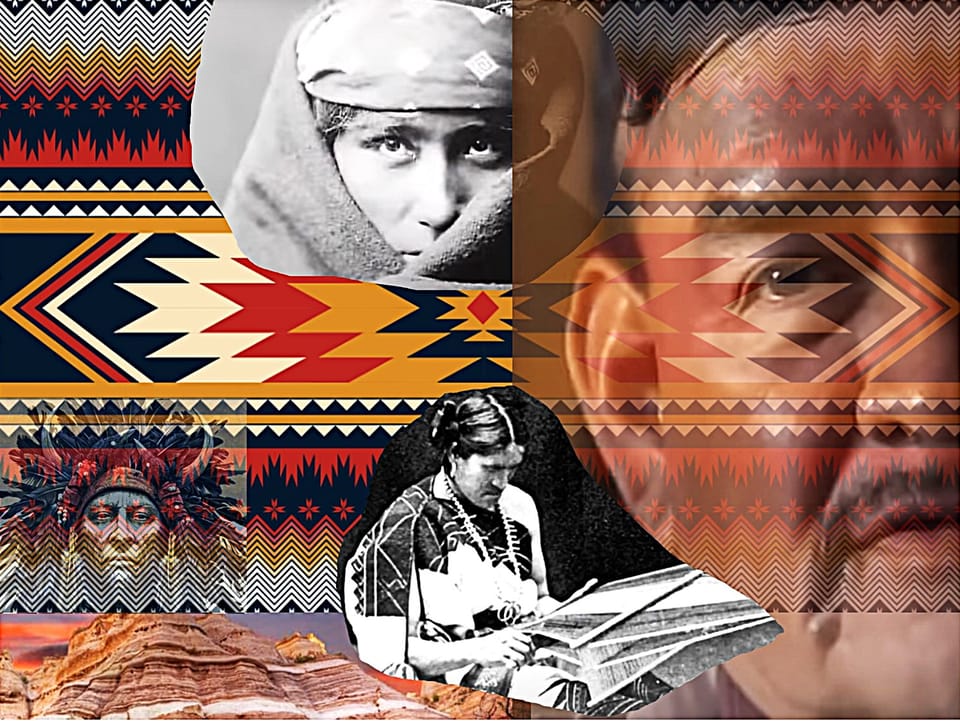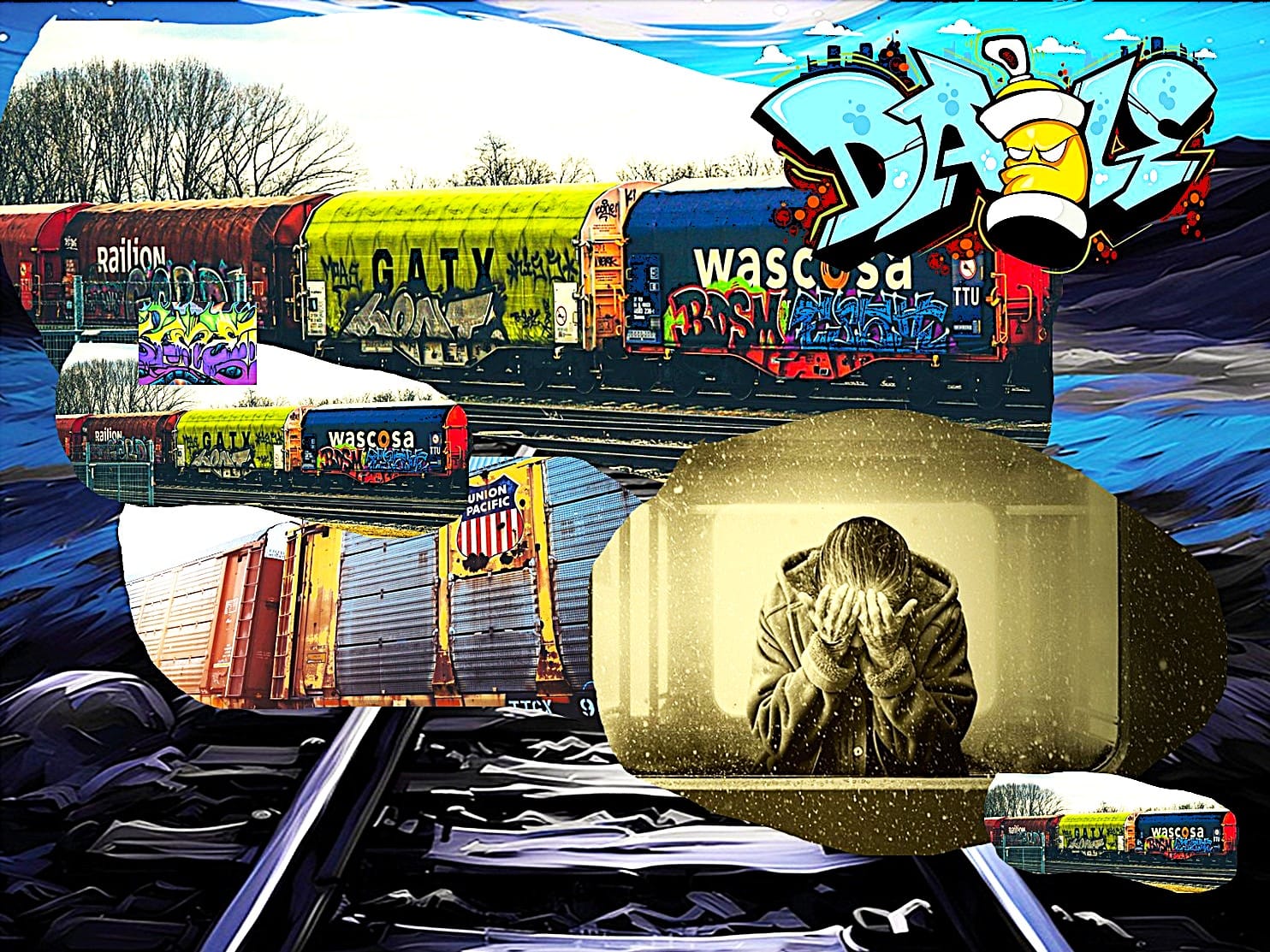Downtown Gallup, New Mexico: Digressions on Time, Change, and Cultural Momentum

It was a familiar sight from my years as a municipal park ranger; an older transient leaned against a brick wall as a younger man with a dog looked nervously down the street awaiting help, both of them disheveled and very much in need of social services. In a few minutes, medics would arrive to assess the older man, asking if he had vomited, taking his vitals while the dog watched with a charming expression of concern and curiosity, a typical call for the urban wilderness. Both men were Navajo. Gallup, New Mexico, sits between worlds, in the midst of rez culture with a growing local art scene that reaches into the town’s future.
Time stands as the ultimate mediator, watching as we move into expanses of desert, furlongs of sand covering the past. Something about New Mexico feels lost in the forward momentum of years, as if the land still waits for a resolution.
Founded in 1881 for the railroad, Gallup sits within McKinley County at the edge of the Navajo reservation. The land is punctuated by trading posts where one can find intricately-decorated pottery in great abundance, as well as jewelry designed by Navajo, Hopi, and Zuni artists. And, where Tonopah, Nevada has its famous Clown Motel, Gallup is home to El Rancho Hotel which remains a landmark of haunting renown.
Director D. W. Griffith and his brother decided to use Gallup for filming, so the latter built the hotel in 1936 to house actors and crew members. A charming three-story structure, El Rancho Hotel reflects the town's many contrasts and, doubtless, guards a number of Hollywood secrets in the shadow of its rooms.
As for time, Gallup depicts its complicated past as a sentinel, of sorts, a tired warrior that trembles before the future, proud yet still uncertain, gifted but very much in need of healing. With this, we regard wounds from the past and consider their significance. Knowing the history of native life in New Mexico, the wars, violence, and the gradual destruction of culture, we can look to a rather famous book for a bit of insight.
“Culture shock is the effect that immersion in a strange culture has on the unprepared visitor.”
This quotation comes from Alvin Toffler, one-time associate editor of Fortune Magazine and Cornell University Visiting Professor. Through his work, the reading public of 1970 was instructed powerfully, taught to view the changes wrought by rapidly advancing technology as an unfamiliar set of customs from a strange land. And what would immersion in this alien culture bring to our society? With a shock equivalent to an electrical charge, the future would impose a set of cultural standards on the population, the substance of which you would have to accept or, as a consequence, be displaced by as a casualty of progress. (1)
Toffler’s work came to mind when I considered the plight of local tribes. To some extent, we might say that the Navajo, Hopi, and Zuni of the American Southwest were early recipients of the changes Toffler defined. As for the sheer weight of the impact, we reflect on the words of Navajo tribe member Roy Smith. He commented on the treatment of indigenous children and how they were instructed in the ways of change:
“Anytime you say one word of Navajo or something, they’ll shave a bar of soap, and they put it in your mouth. And they tell you to wash it out.” (2)
The long walk of tears and the fearing time (when contact with the United States Army devastated the tribes) remain uppermost in the minds of indigenous peoples.
As for cultural shifts and future shocks, we can rightfully call many of them acts of genocide, hostilities either overtly administered by war or gradually imposed through social policies. In either case, they are adjustments made to the very core of a given society, the architects of which have a set of desired outcomes in mind. Perhaps we see the same pattern repeating itself today, manifesting in various parts of the world.
Continuing our reflection, we consider the theme of motion, forward momentum cutting a swathe through the desert at all hours of the day and night. Here, we regard freight trains.

Countless cars and engines chug through the landscape, occasionally blaring their whistles through the hot air, marred by graffiti from unseen drifters. To some degree, these machines symbolize the future shock ancient peoples once endured, being immersed within a strange culture and compelled to adjust. The old ways remain, tattered but resilient, as the engines of commerce cut through ancestral lands with noise and relentless momentum.
Works Cited:
1) Toffler, Alvin. Future Shock (New York: Bantam Books) 1970. pg. 10.
2) Smith, Roy. (Interview given for Long Walk of Tears: The Navajo: PBS Utah Productions, 2007).
For Further Study:
Navajo History (Edited by Ethelou Yazzi and oral and written accounts compiled under the direction of the Navajo Curriculum Center) 1982.
Footprints of Hopi history = Hopihiniwtiput kukveni'at (Edited by Leigh J. Kuwanwisiwma, T. J. Ferguson, and Chip Colwell) (Tuscon, Arizona: The University of Arizona Press) 2018.
Linford, Laurance D. Navajo Places: History, Legend, Landscape (Salt Lake City, Utah: University of Utah Press) 2000.
Zuni History (Sponsored by the Zuni History Project in Cooperation with the Institute of the American West) (Sun Valley, Idaho) 1983.
For more information, you can visit the University of New Mexico Library. Enjoy the journey!